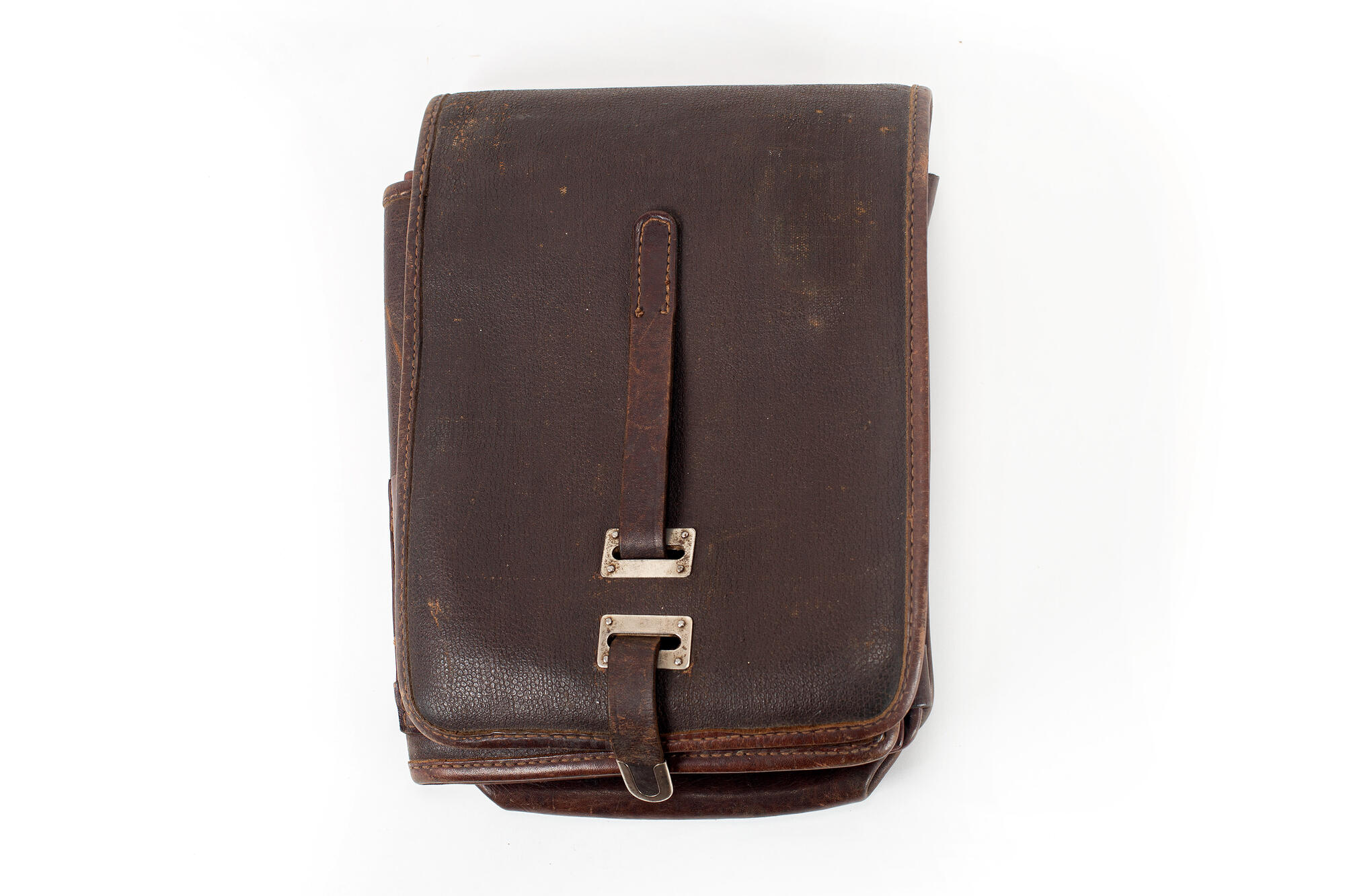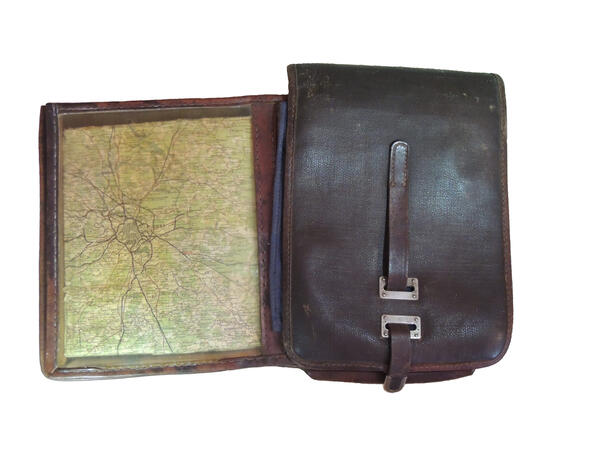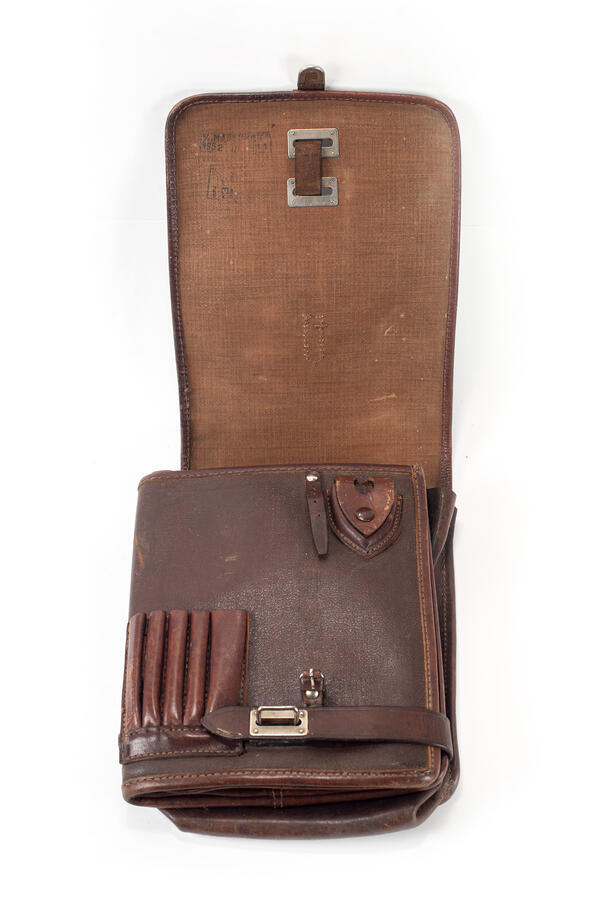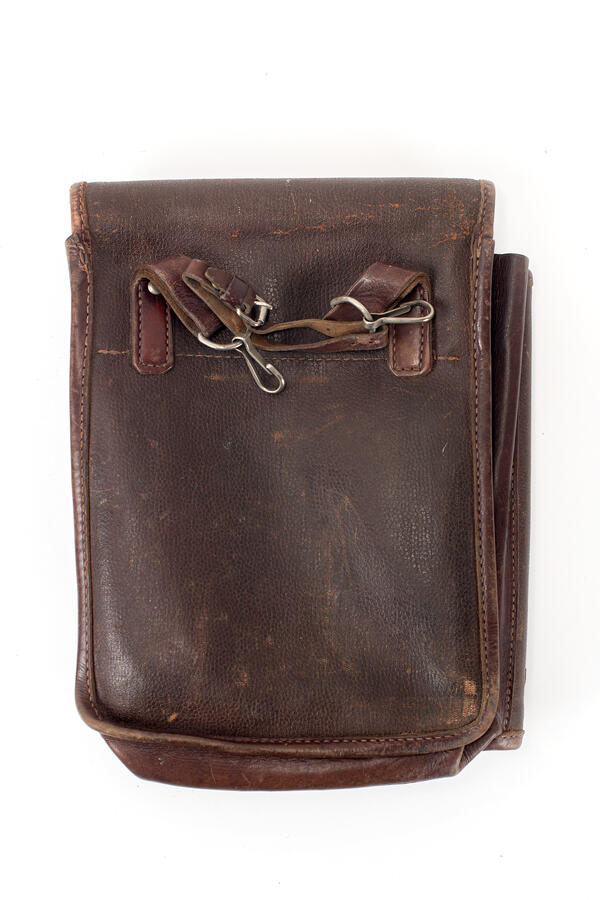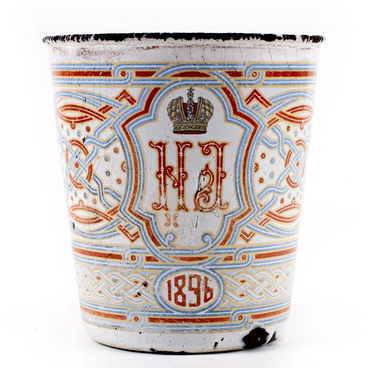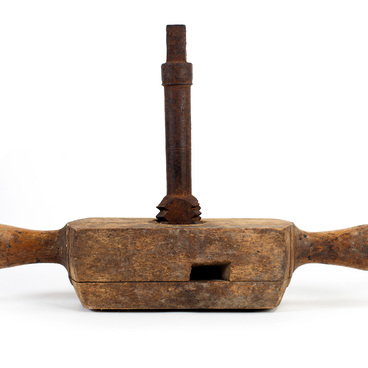Map cases were introduced into the military over 100 years ago and to this day remain an important attribute of an officer’s uniform. In the field, the map case serves both as a desk and a briefcase for documents. It combines two concepts — an officer’s map case and a dispatch case. The dispatch case consists of compartments and cloth partitions, which are convenient for storing maps of the area and important papers. The map case from the collection of the Sergach Museum of Local Lore belonged to the Hero of the Soviet Union and Major General of Tank Forces Andrey Vasilyevich Zhukov.
During the Great Patriotic War, they could always tell a member of the command staff by a map case and a waistbelt, which made him an easy target for the enemy. Map cases were not provided for ordinary soldiers — they were forbidden to have geographical maps on them and had to keep documents in the breast pockets of their tunics. German soldiers were well-versed in the gear of the Soviet army and primarily targeted the commanders. As a camouflage trick, an order was issued for ordinary soldiers to carry map cases. The total number of map cases produced was classified so that the enemy could not estimate the exact number of commanders.
In the early 19th century, a Russian map case could be used to identify the rank and regiment of its owner. The hussar map case was called “tashka” from the German “Tasche” meaning “pocket”. It was a five-cornered pouch made of leather and cloth and adorned with embroidery. “Tashkas” of higher ranks were embroidered with gold or silver threads, and those of soldiers and non-commissioned officers — with white or yellow cord. Each regiment had its own color for the map case. So, during the reign of Alexander I, the hussar regiments had red tashkas with the white initials “A I” under the crown.
A map case became part of a Red Army commander’s gear in 1932 when a decree on the unification of the field equipment was issued. The equipment included a waistbelt, two front and two back shoulder straps, a revolver holster, a map case, a dispatch case, a revolver belt, a case, and a whistle lanyard.
During the Great Patriotic War, bags and cases were sewn from dark brown cowhide leather. They could be worn with either one or two shoulder straps. Carrying a bag and a map case off duty was not allowed. Nowadays, the approach to military uniforms has changed: the size of the army has increased, and the uniforms have become simpler.
During the Great Patriotic War, they could always tell a member of the command staff by a map case and a waistbelt, which made him an easy target for the enemy. Map cases were not provided for ordinary soldiers — they were forbidden to have geographical maps on them and had to keep documents in the breast pockets of their tunics. German soldiers were well-versed in the gear of the Soviet army and primarily targeted the commanders. As a camouflage trick, an order was issued for ordinary soldiers to carry map cases. The total number of map cases produced was classified so that the enemy could not estimate the exact number of commanders.
In the early 19th century, a Russian map case could be used to identify the rank and regiment of its owner. The hussar map case was called “tashka” from the German “Tasche” meaning “pocket”. It was a five-cornered pouch made of leather and cloth and adorned with embroidery. “Tashkas” of higher ranks were embroidered with gold or silver threads, and those of soldiers and non-commissioned officers — with white or yellow cord. Each regiment had its own color for the map case. So, during the reign of Alexander I, the hussar regiments had red tashkas with the white initials “A I” under the crown.
A map case became part of a Red Army commander’s gear in 1932 when a decree on the unification of the field equipment was issued. The equipment included a waistbelt, two front and two back shoulder straps, a revolver holster, a map case, a dispatch case, a revolver belt, a case, and a whistle lanyard.
During the Great Patriotic War, bags and cases were sewn from dark brown cowhide leather. They could be worn with either one or two shoulder straps. Carrying a bag and a map case off duty was not allowed. Nowadays, the approach to military uniforms has changed: the size of the army has increased, and the uniforms have become simpler.
